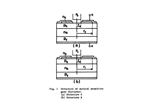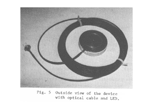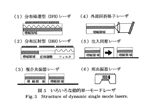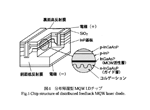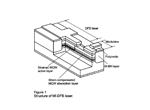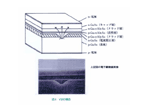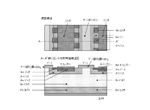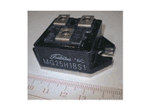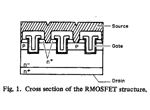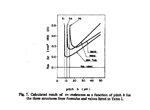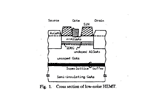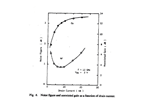Discrete Semiconductor Devices, etc.
1980s
1980: Practical application of a 6-kV/1.5-kA light-triggered thyristor (Hitachi and Toshiba Corporation)
Hitachi and Toshiba first developed light-triggered thyristors (LTTs) that are switchable by the light signal from an LED for commercial use (4 to 6 kV, 1500 A). Practical application testing of power converters using these thyristors was successful.
1981: Development of a dynamic-single-mode indium-gallium-arsenide-phosphide/indium- phosphide DFB laser (NTT and Kokusai Denshin Denwa Co., Ltd.)
NTT and KDD developed the world’s first indium-gallium-arsenide-phosphide/indium-phosphide distributed feedback (DFB)-type buried-heterostructure (BH) laser that was capable of maintaining single-longitudinal-mode oscillation (dynamic single mode) even when fast modulation is applied at around 1.55 μm, wavelength corresponding to the least loss in optical fibers.
1982: Commercial VSIS laser for CD players (Sharp Corporation)
The gallium-arsenide/aluminum-gallium-arsenide laser initially had the disadvantage of rapid deterioration. Sharp used a p-type gallium-arsenide substrate in developing the V-channel substrate inner stripe (VSIS)-structure laser. This laser achieved a product lifetime of about 40,000 hours, making commercial CD players for home use practicable (Sony and Royal Philips Electronics).
1984: Invention of the non-latch-up IGBT (Toshiba)
Toshiba examined and modified the MOSFET structure and in December 1984, developed the latch-up-free insulated gate bipolar transistor (IGBT), which had a breakdown voltage of 1200 V and a current capacity of 75 A. This disproved the then-conventional view that latching-up of parasitic thyristors was not controllable.
1985: Invention of the U-MOSFET (Matsushita Electric Works)
Daisuke Ueda of Matsushita Electric and others devised a power MOSFET in which the channel is formed along the side surface of a cross-sectionally U-shaped groove. This proved the possibility of fabricating a switching element having a lower on-resistance than that of a VMOSFET and DMOSFET (vertical and double-diffusion MOSFET, respectively). This structure leads to power MOSFETs having a relatively low breakdown voltage and is still very widely used today (2010).
1987: Release of a low-noise HEMT for satellite TV reception (Fujitsu and Sony)
The HEMT was initially seen as a fast logic element and was thus used in developing devices such as 16-kbit SRAM for use in supercomputers. Later, however, the HEMT was proven to have superior ultralow-noise characteristics in the microwave and millimeter-wave bands and low-noise HEMTs for satellite-broadcast receiving antennae were developed and released. As the age of satellite TV opened up, the HEMT began to be widely used. Some say that the HEMT contributed to the fall of the Berlin Wall.


